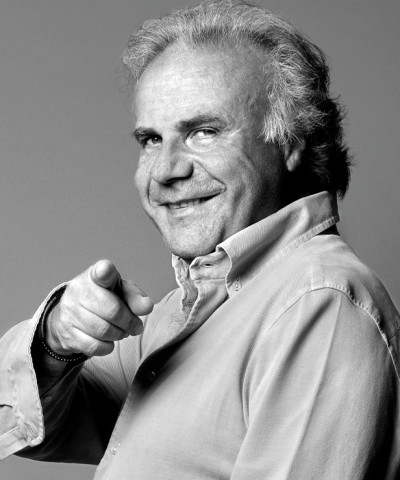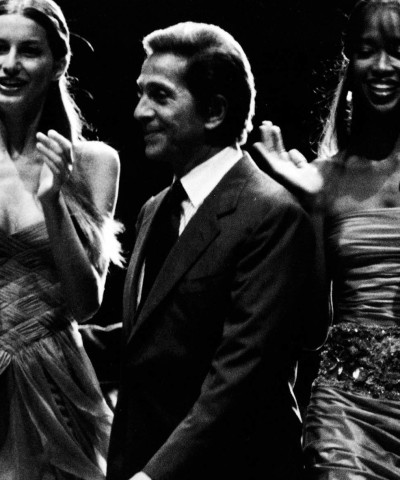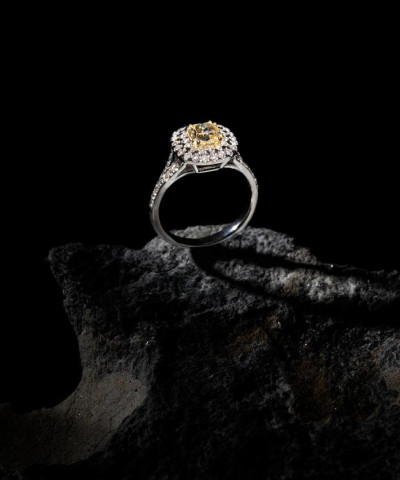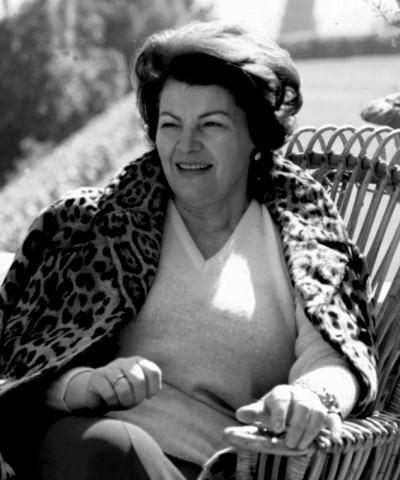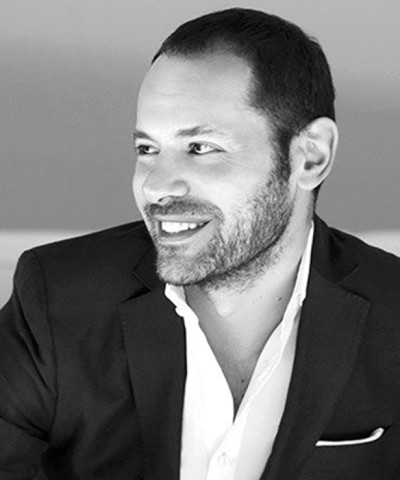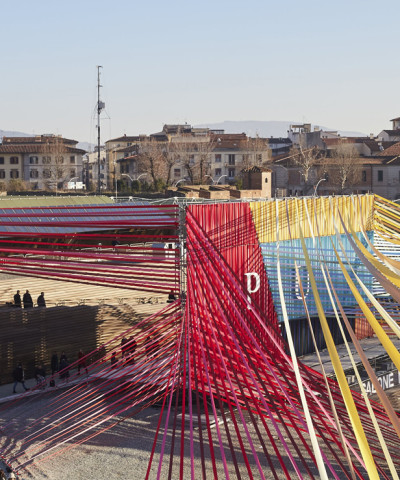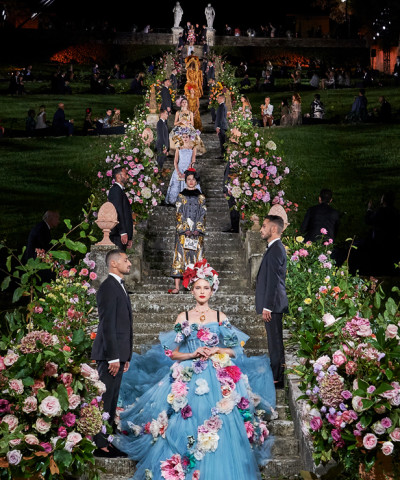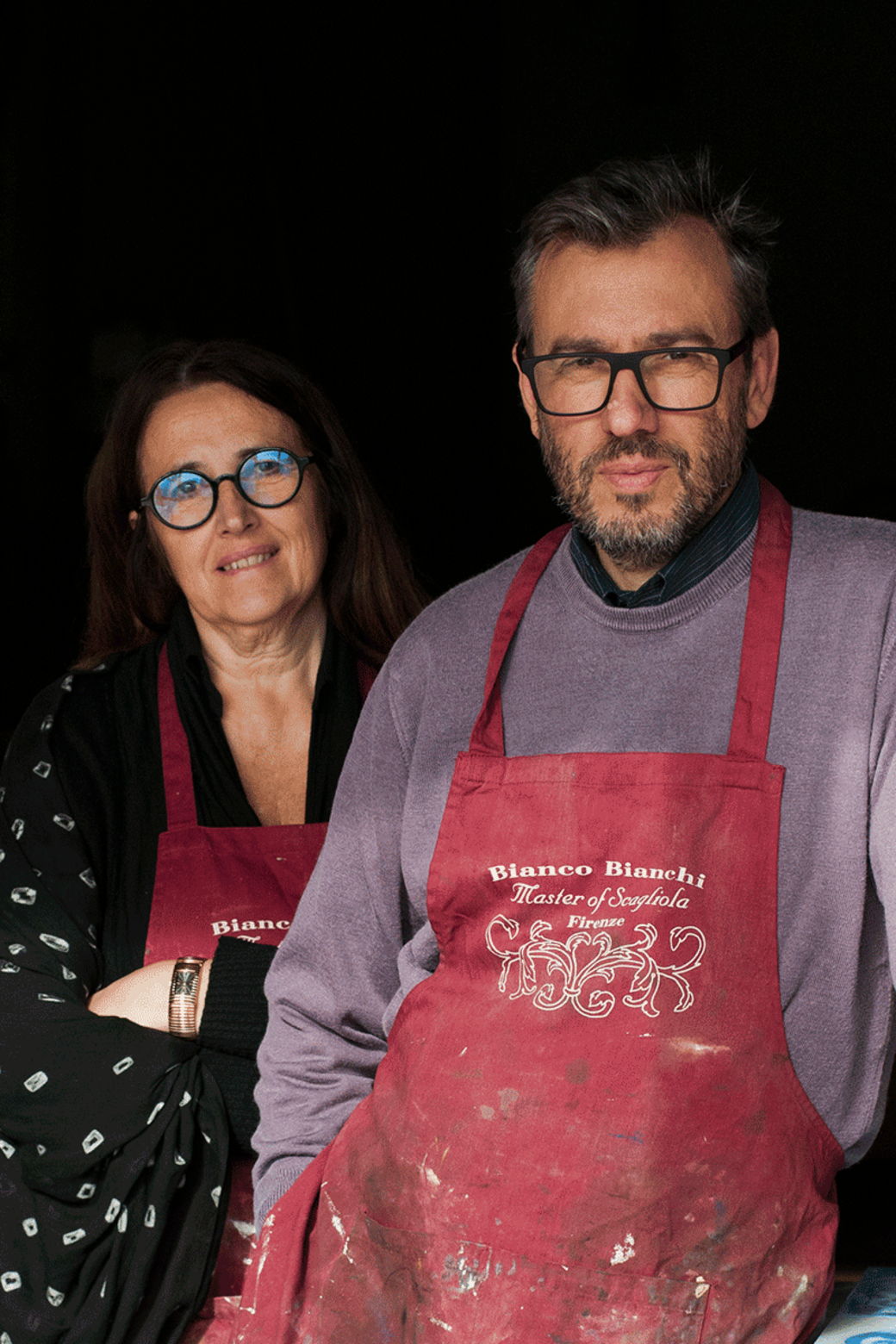
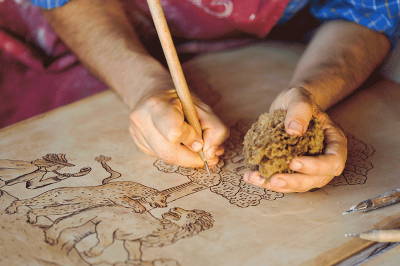
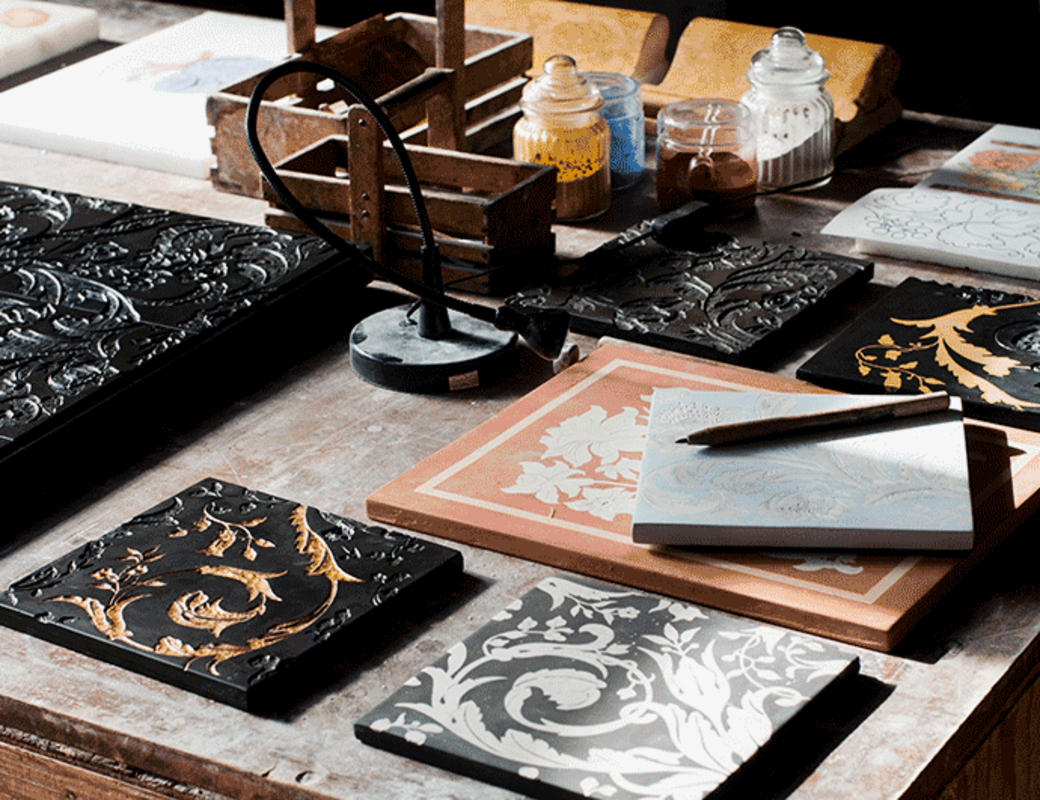
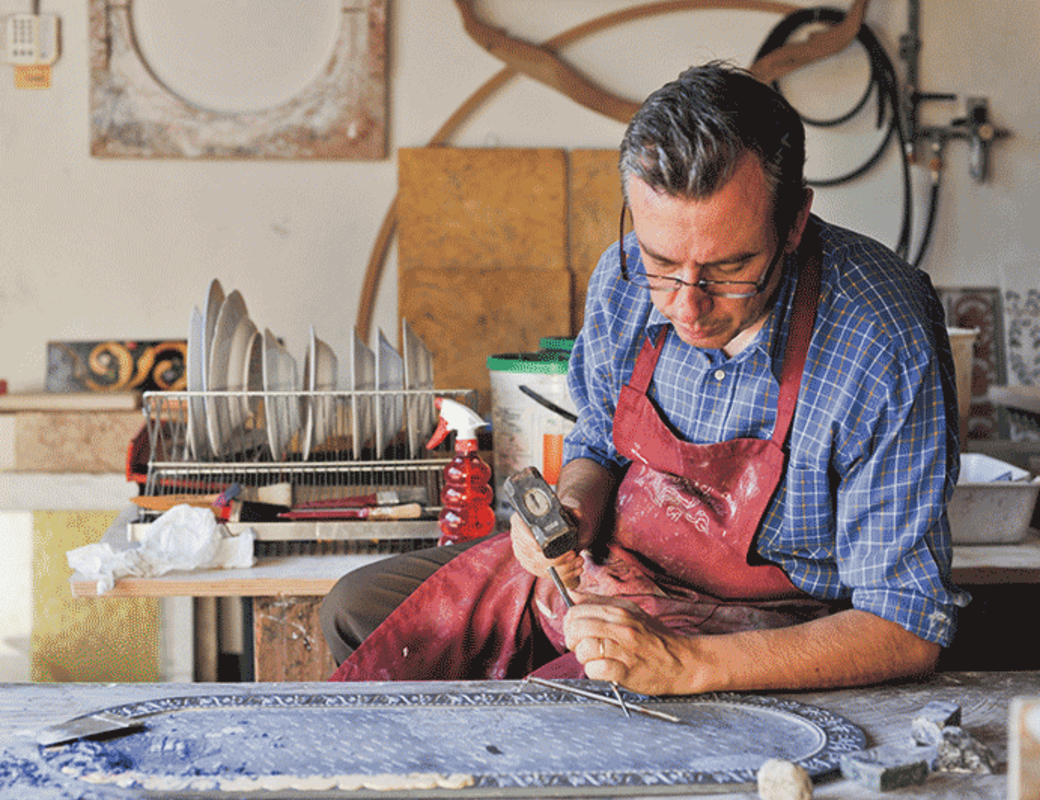
Master of Scagliola
Alessandro Bianchi, with sister Elisabetta, has inherited what seemed to be a lost art

How did you first develop an interest in scagliola?
The whole process was quite natural, which was triggered when, as a child, I used to spend time in the workshop of my father, Bianco, to whom we really owe the rediscovery of this technique. I was lucky to experience the atmosphere of the workshop where friends, colleagues, artists, poets used to meet and discuss art. Passion and technique now also shared with my son Leonardo.
Can you explain to us what it actually consists in?
The term scagliola refers both to a variety of gypsum stone called Selenite, or scagliola, and to a technique that was first adopted in the late 1500s to imitate marble veins and Marquetry works, using Selenite powders, colour pigments and natural glues. But it soon became a proper art in its own right.
What do you love most about your craft?
Its numerous applications and the fact that there is no end to the possible ways in which it may still be experimented.
Which are your favourite subjects?
They range from classical designs of Renaissance inspiration to more contemporary motifs.
One of your works you are particularly fond of?
I would say a panel with finely engraved flowers, created for the Houston Museum of Natural Science.
Your workshop at Pontassieve also houses the most important museum dedicated to scagliola. Which is the most precious piece in the collection?
I particularly love a Crucifixion by Lamberto Cristiano Gori, dating back to 1762. He was a pupil who surpassed his Master.
Where can we admire your own works in the neighbourhood?
At Borgo San Jacopo we have a small exhibition of our products and at Pontassieve, by appointment, you can visit the workshop and admire part of the collection.












